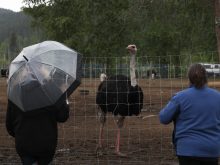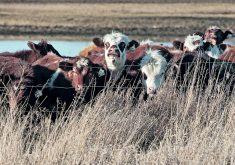Reuters — A week of record-hot weather in Western Canada has forced thousands of people to evacuate their homes, as wildfires rage in parts of Alberta and rapid snow melt triggers flooding across interior British Columbia.
By Friday, more than 13,000 people were under evacuation orders in Alberta. As of late Friday afternoon, 91 fires were considered active, of which 27 were deemed out of control and 18 classified as “being held.”
Among the worst-hit areas was the territory of the Little Red River Cree Nation, which comprises three communities in the north of the province, where the 1,458-hectare (3609-acre) Fox Lake fire consumed 20 homes and the police station.
Read Also

JBS profit falls amid still-challenging US market environment
JBS, the world’s largest meat company, reported a net profit fall in the third quarter in spite of a rise in global net sales amid a still-challenging beef market environment in the U.S., according to an earnings statement on Thursday.
The entire 7,000-strong population of Drayton Valley, 140 km west of Edmonton, was also ordered to evacuate late Thursday night, followed by Edson, a town of about 8,100 people about 140 km northwest of Drayton Valley, on Friday evening. Evacuations were also expanding in surrounding Brazeau and Yellowhead counties.
Parts of the counties of Strathcona, Leduc, Athabasca, Parkland and Grande Prairie were also under mandatory evacuation orders Friday evening, as were communities including Fox Lake, Sturgeon Lake Cree Nation and Entwistle.
Alberta has imposed a ban on open burning, including backyard fire pits, across the entire province. Recreational use of off-highway vehicles on public land, including designated OHV trails, is also now prohibited.
MORE READING: Farm checklist against fire
Pembina Pipeline Corp., which operates oil pipelines in the region, said it has activated emergency response and incident management processes and is “evaluating any current or anticipated operational impacts.”
There were no reported impacts on oil and gas producers, although the province said Friday that oil and gas facilities were among the evacuations Thursday night from a wildfire area southeast of Edson.
There have been 363 wildfires in Alberta so far this year and more than 43,000 hectares burned, the province reported Friday. At the same date in 2022, 175 fires had been reported with almost 414 hectares burned.
“This is significantly more wildfire activity for this time of year than we have seen any time in the recent past,” Christie Tucker, an information unit manager for Alberta Wildfire, told a press conference, adding fires were expected to intensify Friday.
“It’s going to get hotter, it’s going to get windier and we are expecting some extreme wildfire behaviour. Firefighters are at the ready today for what could be an extremely challenging day,” she said.
As of Friday evening in neighbouring Saskatchewan, 16 wildfires were considered active, with eight deemed “not contained,” out of 77 so far this year, almost double the five-year average. As of Friday morning, the province’s fire weather index, a risk gauge for potential fire intensity, mapped out most of agricultural Saskatchewan as “extreme.”
Its biggest active fire, at about 5,000 hectares as of Friday morning, is around First Nations communities near Jackfish Lake, about 40 km north of North Battleford in the province’s northwest.
In British Columbia, rivers burst their banks, washing through homes and forcing highway closures in numerous communities across the province’s interior, including Cache Creek and Grand Forks.
Until last week Western Canada had been enduring a cold spring but a rapid onset of unseasonably high temperatures, in places 10 to 15 C above the average for early May, is causing both fires and flooding.
With heavy rain in the forecast, the British Columbia government urged communities to be prepared for more flooding over the weekend.
“Warm temperatures in the Interior have accelerated snowmelt and caused increased pressure on rivers and creeks,” the provincial ministry of emergency management said in a statement.
“The situation is expected to worsen as rainfall and thundershowers are forecast for Friday, May 5, and Saturday, May 6, which increases the likelihood of flooding.”
— Reporting for Reuters by Nia Williams. Includes files from Glacier FarmMedia Network staff.











